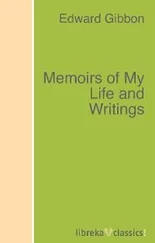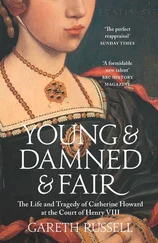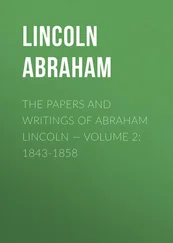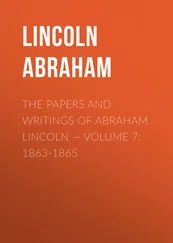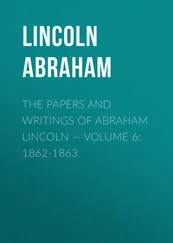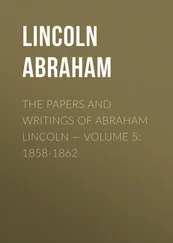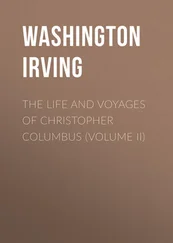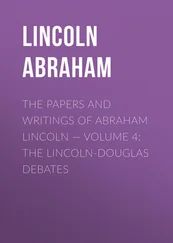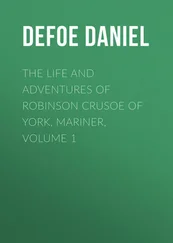Henry Fuseli - The Life and Writings of Henry Fuseli, Volume 3 (of 3)
Здесь есть возможность читать онлайн «Henry Fuseli - The Life and Writings of Henry Fuseli, Volume 3 (of 3)» — ознакомительный отрывок электронной книги совершенно бесплатно, а после прочтения отрывка купить полную версию. В некоторых случаях можно слушать аудио, скачать через торрент в формате fb2 и присутствует краткое содержание. Жанр: visual_arts, foreign_antique, foreign_prose, на английском языке. Описание произведения, (предисловие) а так же отзывы посетителей доступны на портале библиотеки ЛибКат.
- Название:The Life and Writings of Henry Fuseli, Volume 3 (of 3)
- Автор:
- Жанр:
- Год:неизвестен
- ISBN:нет данных
- Рейтинг книги:5 / 5. Голосов: 1
-
Избранное:Добавить в избранное
- Отзывы:
-
Ваша оценка:
- 100
- 1
- 2
- 3
- 4
- 5
The Life and Writings of Henry Fuseli, Volume 3 (of 3): краткое содержание, описание и аннотация
Предлагаем к чтению аннотацию, описание, краткое содержание или предисловие (зависит от того, что написал сам автор книги «The Life and Writings of Henry Fuseli, Volume 3 (of 3)»). Если вы не нашли необходимую информацию о книге — напишите в комментариях, мы постараемся отыскать её.
The Life and Writings of Henry Fuseli, Volume 3 (of 3) — читать онлайн ознакомительный отрывок
Ниже представлен текст книги, разбитый по страницам. Система сохранения места последней прочитанной страницы, позволяет с удобством читать онлайн бесплатно книгу «The Life and Writings of Henry Fuseli, Volume 3 (of 3)», без необходимости каждый раз заново искать на чём Вы остановились. Поставьте закладку, и сможете в любой момент перейти на страницу, на которой закончили чтение.
Интервал:
Закладка:
It is evident from every picture or design at every period of his art in which she had a part, that he supposed her enamoured when she follows the body of the Saviour to the tomb, or throws herself dishevelled over his feet, or addresses him when he bears his cross. The cast of her features, her forms, her action, are the character of love in agony. When character inspired Raffaello, his women became definitions of grace and pathos at once.
Such is the exquisite line and turn of the averted half-kneeling female with the two children among the spectators of Heliodorus. Her attitude, the turn of her neck, supplies all face, and intimates more than he ever expressed by features; and that she would not have gained by showing them, may be guessed from her companion on the foreground, who, though highly elegant and equally pathetic in her action, has not features worthy of either. The fact is, form and style were by Raffaello employed chiefly, if not always, as vehicles of character and pathos; the Drama is his element, and to that he has adapted them in a mode and with a propriety which leave all attempts at emendation hopeless: if his lines have been excelled or rivalled in energy, correctness, elegance, – considered as instruments of the passions, they have never been equalled, and as parts of invention, composition and expression relative to his story, have never been approached.
The result of these observations on M. Agnolo and Raffaello is this, that M. Agnolo drew in generic forms the human race; that Raffaello drew the forms and characters of society diversified by artificial wants.
We find therefore M. Agnolo more sublime, and we sympathise more with Raffaello, because he resembles us more. When Reynolds said that M. Agnolo had more imagination , and Raffaello more fancy , he meant to say, that the one had more sublimity, more elementary fire; the other was richer in social imagery, in genial conceits, and artificial variety. Simplicity is the stamen of M. Agnolo; varied propriety, with character, that of Raffaello.
Of the great restorers of Art, the two we have considered, made Design and Style the basis of their plan, content with negative and unambitious colour; the two next inverted the principle, and employed Design and Style as vehicles of colour or of harmony .
The style of Tiziano's design has two periods: he began with copying what was before him without choice, and for some time continued in the meagre, anxious, and accidental manner of Giovanni Bellino; but discovering in the works of Giorgione that breadth of form produced breadth of colour, he endeavoured, and succeeded, to see Nature by comparison, and in a more ample light. That he possessed the theory of the human body, needs not to be proved from the doubtful designs which he is said to have made for the anatomical work of Vesalio; that he had familiarized himself with the style of M. Agnolo, and burned with ambition to emulate it, is less evident from adopting some of his attitudes in the pictures of Pietro Martyre and the Battle of Ghiaradadda, than from the elemental conceptions, the colossal style, and daring foreshortenings which astonish in the Cain and Abel, the Abraham and Isaac, the Goliath and David, on the ceiling of the fabric of St. Spirito at Venice. Here, and here alone, is the result of that union of tone and style which, in Tintoretto's opinion, was required to make a perfect painter, – for in general the male forms of Tiziano are those of sanguine health, often too fleshy for character, less elastic than muscular, or vigorous without grandeur. His females are the fair dimpled Venetian race, soft without delicacy, too full for elegance, for action too plump; his infants are poised between both, and preferable to either. In portrait he has united character and resemblance with dignity, and still remains unrivalled.
A certain national character marks the brightest æra of the Venetian school: however deviating from each other, Tiziano, Tintoretto, Bassan, and Paolo, acknowledged but one element of imitation, Nature herself. This principle each bequeathed to his followers; and no attempt to adulterate its simplicity, by uniting different methods, distinguished their immediate successors. Hence they preserved features of originality longer than the surrounding schools, whom the vain wish to connect incompatible excellence soon degraded to mediocrity, and from that plunged to insignificance.
The soft transitions from the convex to the concave line, which connect grandeur with lightness, form the style of Correggio; but using their coalition without balance, merely to obtain a breadth of demi-tint and uninterrupted tones of harmony, he became, from excess of roundness, oftener heavy than light, and frequently incorrect.
It is not easy, from the unaccountable obscurity in which his life is involved, to ascertain whether he saw the Antique in sufficient degrees of quantity or beauty; but he certainly must have been familiar with modelling, and the helps of sculpture, to plan with such boldness, and conquer with such ease, the unparalleled difficulties of his foreshortenings. His grace is oftener beholden to convenience of place than elegance of line. The most appropriate, the most elegant attitudes were adopted, rejected, perhaps sacrificed to the most awkward ones, in compliance with his imperious principle: parts vanished, were absorbed, or emerged in obedience to it.
The Danaë, of which we have seen duplicates, the head excepted, he seems to have painted from an antique female torso. But ideal beauty of face, if ever he conceived, he never has expressed; his beauty is equally remote from the idea of the Venus, the Niobe, and the best forms of Nature. The Magdalen, in the picture of St. Girolamo of Parma, is beholden for the charms of her face to chiaroscuro, and that incomparable hue and suavity of bloom which scarcely permit us to discover the defects of forms not much above the vulgar. But that he sometimes reached the sublime, by hiding the limits of his figures in the bland medium which inwraps them, his Jupiter and Io prove.
Such were the principles on which the Tuscan, the Roman, the Venetian, and the Lombard schools established their systems of style, or rather the manner which, in various directions and modes of application, perverted style. M. Agnolo lived to see the electric shock which his design had given to Art, propagated by the Tuscan and Venetian schools as the ostentatious vehicle of puny conceits and emblematic quibbles, or the palliative of empty pomp and degraded luxuriance of colour.
Of his imitators, the two most eminent are Pellegrino Tibaldi, called "M. Agnolo riformato" by the Bolognese Eclectics, and Francesco Mazzuoli, called Parmegiano.
Pellegrino Tibaldi penetrated the technic without the moral principle of his master's style; he had often grandeur of line without sublimity of conception; hence the manner of M. Agnolo is frequently the style of Pellegrino Tibaldi. Conglobation and eccentricity, an aggregate of convexities suddenly broken by rectangular, or cut by perpendicular lines, compose his system. His fame principally rests on the Frescoes of the Academic Institute at Bologna, and the Ceiling of the Merchants' Hall at Ancona. It is probably on the strength of those, that the Carracci, his countrymen, are said to have called him their "M. Agnolo riformato," – M. Agnolo corrected. I will not do that injustice to the Carracci to suppose, that for one moment they could allude by this verdict to the Ceiling and the Prophets and Sibyls of the Capella Sistina; they glanced perhaps at the technic exuberance of the Last Judgement, and the senile caprices of the Capella Paolina. These, they meant to inform us, had been pruned, regulated, and reformed by Pellegrino Tibaldi. Do his works in the Institute warrant this verdict? So far from it, that it exhibits little more than the dotage of M. Agnolo. The single figures, groups, and compositions of the Institute, present a singular mixture of extraordinary vigour and puerile imbecility of conception, of character and caricature, of style and manner.
Читать дальшеИнтервал:
Закладка:
Похожие книги на «The Life and Writings of Henry Fuseli, Volume 3 (of 3)»
Представляем Вашему вниманию похожие книги на «The Life and Writings of Henry Fuseli, Volume 3 (of 3)» списком для выбора. Мы отобрали схожую по названию и смыслу литературу в надежде предоставить читателям больше вариантов отыскать новые, интересные, ещё непрочитанные произведения.
Обсуждение, отзывы о книге «The Life and Writings of Henry Fuseli, Volume 3 (of 3)» и просто собственные мнения читателей. Оставьте ваши комментарии, напишите, что Вы думаете о произведении, его смысле или главных героях. Укажите что конкретно понравилось, а что нет, и почему Вы так считаете.

